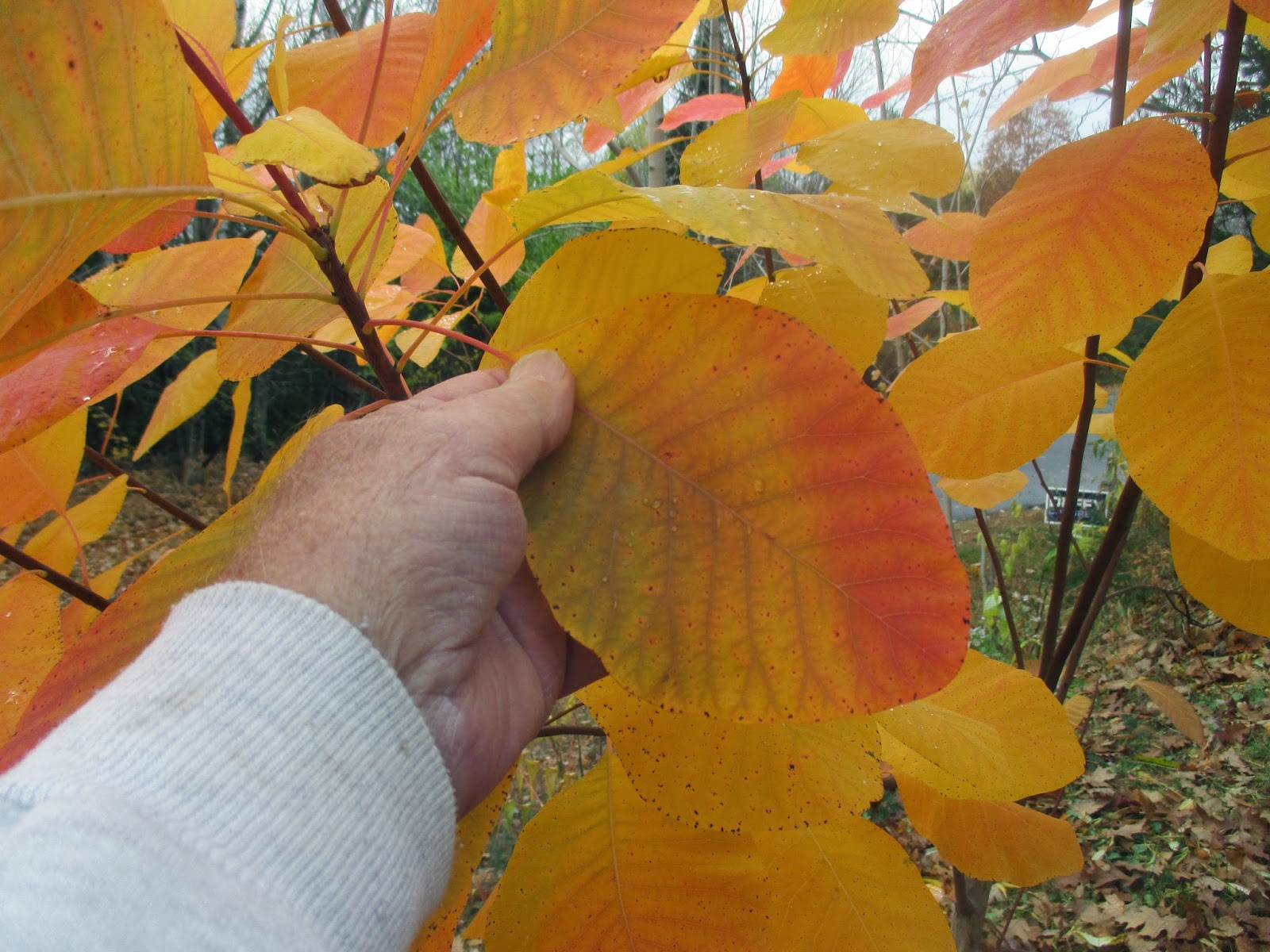 |
| AMERICAN SMOKE TREE FALL LEAF COLOR |
 |
| LARGE, OBOVATE LEAVES WITH PROMINENT VEINS |
 |
| ANOTHER SMOKE TREE, GROWING IN THE SHADE, WITH GOLDEN FALL LEAF COLORATION |
It will be a good day to run a few errands, and get out to the deer stand to put down some bait. Buddy and I need to get out and look for grouse, probably tomorrow. Pointers are over-the-top enthusiastic hunters, running through rough cover with reckless abandon, and he has managed to get himself banged up again, this time a puncture wound through the skin over his rib cage. Of course, being a dog he won't leave it alone, so he is now wearing his winter jacket to keep him from irritating the wound. I keep telling him that's better than wearing a "lamp shade" again, but that doesn't seem to register. The jacket works, though.
The American smoke tree, Cotinus obovatus, is in the cashew family, the Anacardiaceae, the same family as sumac and poison ivy. In fact, some authorities list the smoke tree in the same genus, Rhus. Like sumac, the smoke tree has strong smelling yellow wood, unusual flowers and fruit, and spectacular fall color. The smoke tree has alternate, entire leaves, whereas the sumac has compound leaves. The genus name is derived from the Latin name for the wild olive, and the species name refers to the obovate shape of the leaves.
The smoke trees (there is also a Eurasian species, C. coggygria) are mostly planted for their unusual large, filmy flower plumes that evoke the appearance of smoke. The actual flowers and fruit themselves are visually insignificant. There are many cultivars of the Eurasian species, some with purple leaves. But it is the American species which has the spectacular fall leaf color.
The American smoke tree, also called Chittam-wood, is native to calcareous rocky woods and bluffs in a small geographic area in the far south-central American Midwest and south into Texas, but it is perfectly hardy much farther north.











No comments:
Post a Comment